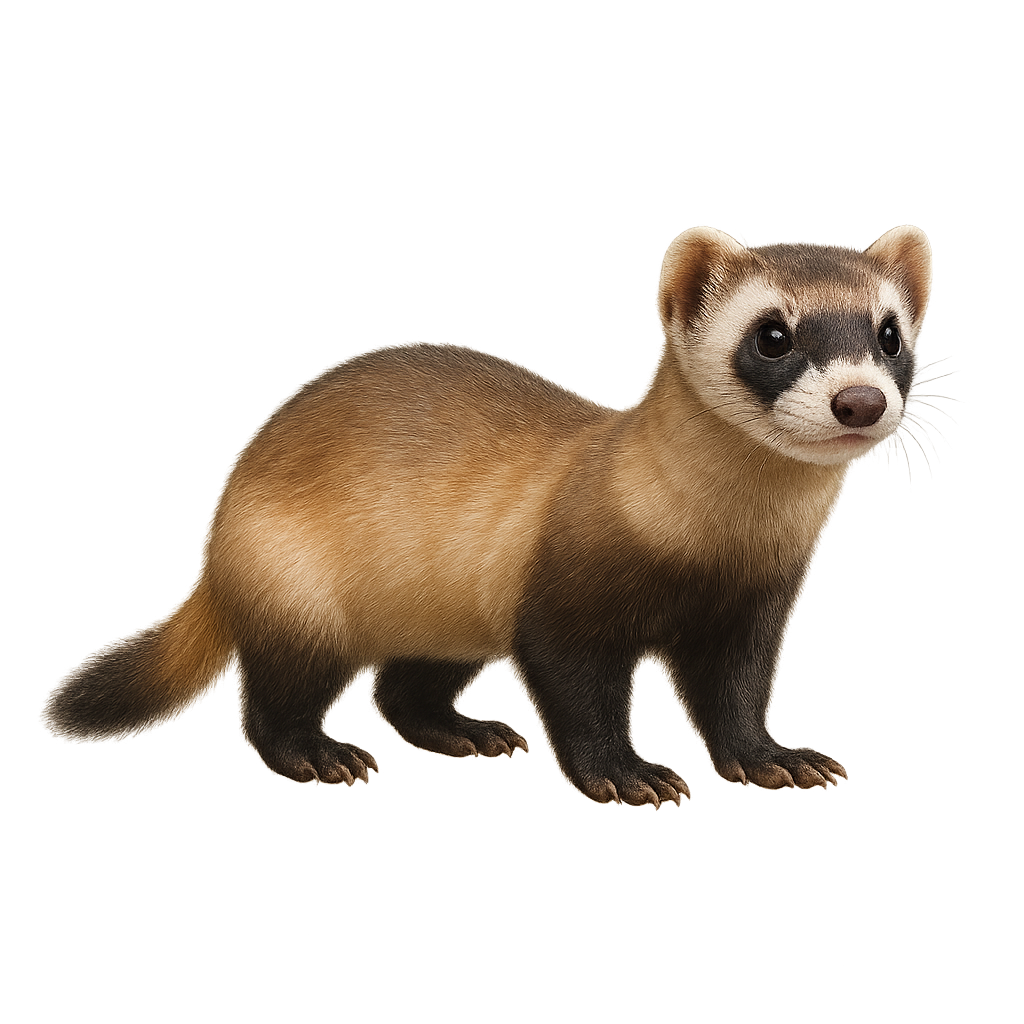Your wildlife photography guide.
Explore the black-footed ferret in detail, study its behavior, prepare your shots.
Where to observe and photograph the black-footed ferret in the wild
Learn where and when to spot the black-footed ferret in the wild, how to identify the species based on distinctive features, and what natural environments it inhabits. The WildlifePhotographer app offers tailored photography tips that reflect the black-footed ferret’s behavior, helping you capture better wildlife images. Explore the full species profile for key information including description, habitat, active periods, and approach techniques.
Black-footed ferret
Scientific name: Mustela nigripes

IUCN Status: Critically Endangered
Family: MUSTELIDAE
Group: Mammals
Sensitivity to human approach: Shy
Minimum approach distance: 15 m
Rut period: March to April
Gestation: 41-43 jours
Births: May to June
Habitat:
Prairies, plains, steppes
Activity period :
Mainly active at night, generally discreet during the day.
Identification and description:
The black-footed ferret, or Mustela nigripes, is a rare and iconic small carnivore of the North American prairies. It is distinguished by its light beige fur, black feet, and facial mask, as well as its slender body and bushy tail. This mustelid is a specialized predator, primarily feeding on prairie dogs. Unfortunately, it is critically endangered due to habitat loss and disease. Conservation efforts, including captive breeding and reintroduction into the wild, are crucial for its survival. The black-footed ferret is a symbol of prairie biodiversity and the importance of ecosystem conservation.
Recommended lens:
400mm – adjust based on distance, desired framing (portrait or habitat), and approach conditions.
Photography tips:
To photograph the black-footed ferret, it is essential to maintain a safe distance of at least 15 m to avoid disturbing it. Use a telephoto lens of 400 mm or more to capture detailed images without getting too close. Dusk or nighttime hours are ideal for observing this animal, as it is primarily active at night. Be patient and discreet, and avoid sudden movements. Focus on open prairies where the black-footed ferret is likely to hunt.
The WildlifePhotographer App is coming soon!
Be the first to explore the best nature spots, track rutting seasons, log your observations, and observe more wildlife.
Already 1 439 wildlife lovers subscribed worldwide

